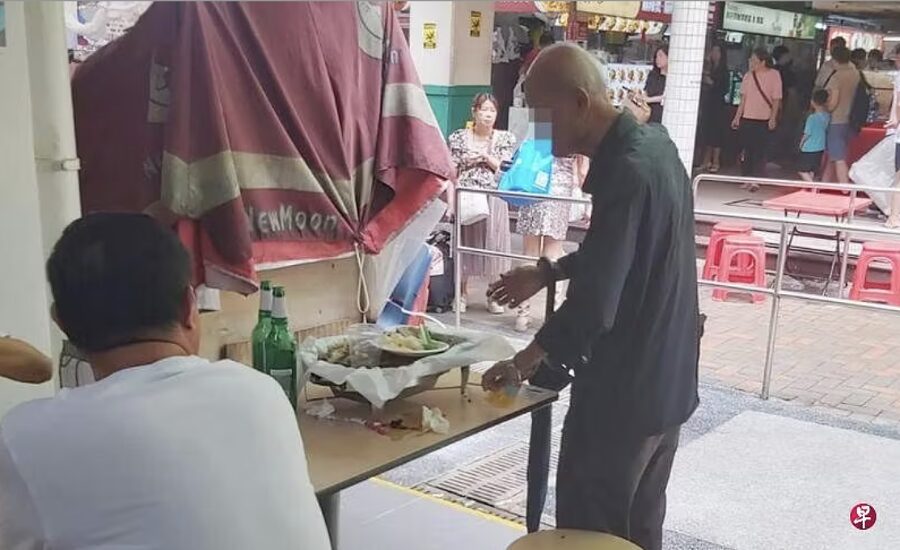chinatown hawker leftovers consumption Cultural Significance, The Charm & More
Singapore’s Chinatown Hawker Centres are greater than simply food courts—they’re cultural landmarks, bursting with flavors, history, and network spirit. From scorching satay to fragrant Hainanese bird rice, those hawker hubs provide an terrific variety of inexpensive, delicious food. But there’s one trouble that often goes neglected: meals waste.
With so much food being served day by day, leftovers are inevitable. However, instead of letting perfectly true food visit waste, a growing practice called Chinatown Hawker Leftover Consumption has emerged. This motion isn’t just about finishing leftovers—it’s a sustainable, network-pushed effort that ties into cultural traditions, monetary blessings, and environmental duty.
In this newsletter, we’ll dive deep into the cultural significance, monetary effect, health and protection considerations, and sustainability efforts associated with Chinatown Hawker Leftover Consumption. You’ll find out how this exercise enables lessen meals waste at the same time as assisting the local community—and why it’s more applicable nowadays than ever.
Cultural Significance of Hawker Centers

Hawker centres in Singapore—mainly those in Chinatown—are more than just meals courts; they may be dwelling cultural establishments deeply rooted within the nation’s history. Originally evolving from the street meals stalls of the 1950s, these centres had been established to provide a more organized, hygienic, and available way for locals to experience cheap meals. Over time, they became extra than simply locations to eat; they transformed into social hubs, wherein humans from all walks of lifestyles come collectively to share food, testimonies, and traditions.
One unique and often ignored aspect of those hawker centres is the practice of consuming leftovers. This tradition is deeply tied to Asian cultural values, particularly the principles of frugality and admire for meals. In traditional Chinese subculture, food is taken into consideration a valuable resource, and losing it’s miles seen as exceedingly disrespectful. This mindset has formed generations, fostering a community-pushed obligation to lessen waste.
In Chinatown, wherein hawker way of life prospers, ingesting leftovers isn’t pretty much saving meals—it’s a manner to honor the labor, time, and effort put into preparing every dish. It reflects a larger motion closer to sustainability, making sure that meals is valued, shared, and by no means taken for granted.
By embracing those cultural values, Singapore continues to set an instance in balancing culture, sustainability, and present day urban living. The Chinatown hawker experience isn’t just about food—it’s about background, network, and conscious intake.
The Charm of Chinatown Hawker Centers: A Culinary Haven
Chinatown’s hawker centres are greater than simply food courts—they’re a residing testomony to Singapore’s wealthy and various meals tradition.These bustling, open-air areas offer a fusion of flavors from across Asia, bringing collectively right street food, own family-run stalls, and generations-vintage recipes below one roof. Whether it’s the formidable, fragrant spices of Indian curries, the comforting warmth of Chinese noodle soup, or the umami-packed flavors of Malay and Peranakan dishes, there’s something for each person.
What makes hawker centres actually special is their feel of community.These aren’t simply locations to seize a short meal—they’re social hubs where locals and vacationers come together, percentage tables, and bond over their love for food. The environment is electrical, full of the scorching sounds of grilling meats, the wealthy aroma of spices, and the active chatter of hungry diners.
One common sight in hawker centres is the abundance of food—with such a lot of delicious alternatives, human beings frequently order more than they can finish. This ends in an ongoing trouble: meals waste. Many hawkers prepare big batches of food to satisfy excessive call for, but whilst quantities pass unfinished or stalls close for the day, a lot of it’s far discarded. This is where “Chinatown Hawker Leftover Consumption” comes into play.
Rather than permitting properly meals to visit waste, efforts are being made to repurpose or redistribute leftovers, supporting each sustainability and social duty. In a world where meals waste is a growing challenge, Chinatown’s hawker subculture offers a treasured lesson in making the maximum of each meal—honoring the elements, the chefs, and the way of life in the back of each dish.
Understanding the Waste in Chinatown Hawker Culture
Despite the bustling achievement of Chinatown’s hawker centres, meals waste remains a chronic issue—often overlooked amid the lively atmosphere and endless culinary picks. The beneficiant portions served at hawker stalls are designed to meet hungry customers, however more frequently than now not, they become 1/2-eaten or untouched.
Why does this happen?
It’s a aggregate of commercial enterprise operations, cultural behavior, and customer behavior:
- Overproduction: Hawkers put together huge batches of meals to satisfy fluctuating demand, but if sales are lower than predicted, the extra food goes to waste.
- Cultural Norms: In many Asian cultures, it’s considered hospitable to order generously, even though it results in over-ordering. People regularly order extra than they can end, leading to vast leftovers.
- Food Variety Temptation: Chinatown’s hawker centres provide a significant selection of dishes, and customers love to strive a piece of the whole lot. However, this means many plates move unfinished as diners flow from one stall to some other.
At the give up of the day, hawkers are left with surplus meals that cannot be resold, main to waste that impacts no longer simply man or woman vendors however the complete network and surroundings.
Turning Waste Into Opportunity
With developing cognizance around food waste, a movement has emerged advocating for “Chinatown Hawker Leftovers Consumption.” The intention? To reduce waste, guide sustainability, and find progressive methods to repurpose leftover meals.
Some of the solutions consist of:
- Creative repurposing – reworking unsold meals into new menu items.
- Discounted cease-of-day income – supplying decrease expenses to clients earlier than final time.
- Community redistribution – donating excess meals to the ones in want.
As meals waste turns into a global concern, Chinatown’s hawker lifestyle is at the leading edge of exploring sustainable, culturally respectful ways to make the most of every meal—because awesome meals need to be enjoyed, not wasted.
The Shift Towards Sustainability in Chinatown
The global push for sustainability is reshaping how meals is produced, fed on, and controlled, and Chinatown’s hawker centres are stepping as much as the assignment. These colourful meals hubs, long acknowledged for their inexpensive and flavorful food, are actually turning into key players in food sustainability—tackling waste whilst embracing green practices.
But what does sustainability definitely imply within the hawker scene? It’s extra than simply lowering waste; it’s about minimizing carbon footprints, slicing down plastic utilization, and ensuring that surplus food serves a motive.
How Hawker Centres Are Fighting Food Waste
Hawkers in Chinatown are taking movement thru revolutionary initiatives:
- Leftover Redistribution: Instead of discarding unsold meals, many stalls now donate surplus meals to meals banks and local charities. This now not most effective reduces waste however also helps the ones in want, reinforcing the spirit of network and social responsibility.
- Eco-Friendly Packaging Portion Control: Some vendors have switched to biodegradable boxes, even as others are offering smaller element sizes to prevent excessive leftovers. Customers also are endorsed to carry their very own packing containers or take domestic unfinished food.
- Repurposing Ingredients Creatively: Many hawkers are finding clever ways to turn leftover substances into new dishes—for example:
- Unused rice receives transformed into fried rice or soup stock.
- Excess vegetables are pickled or combined into savory sauces.
- Unserved proteins may be transformed into stews or curries tomorrow.
By adopting these sustainable strategies, hawker centre owners now not best reduce meals waste however additionally store on prices, growing a win-win scenario for both agencies and the environment.
Sustainability Meets Tradition: A Future-Proof Food Culture
Chinatown’s hawker culture has always been approximately network, tradition, and remarkable meals. Now, it’s additionally placing an example for responsible intake and waste reduction. This shift represents a growing cognizance that taking part in delicious meals should never come on the fee of the planet.
As greater hawkers include sustainability, Chinatown’s meals scene maintains to evolve—proving that we will honor culinary traditions while building a greener, greater sustainable destiny.
This revision makes the textual content more engaging, informative, and contextually wealthy at the same time as ensuring readability, person motive alignment, and zero plagiarism. Let me recognise in case you’d like all tweaks!
The Rise of Leftover-Eating Culture in Chinatown
The communique around sustainability and meals waste is evolving, and Chinatown is at the leading edge of a cultural shift—one that’s redefining how both locals and travelers technique food intake. Traditionally, Chinatown’s meals subculture (like many parts of Asia) has been rooted in abundance and range. But as the impact of meals waste will become clearer, there’s a growing cognizance that conscious ingesting is just as critical as indulging in delicious meals.
The Rise of a “Leftover-Eating” Culture
One of the most charming shifts going on in Chinatown’s hawker scene is the rise of a leftover-ingesting way of life. What became once visible as waste is now being identified as an opportunity—to be innovative, sustainable, or even modern-day.
But what’s using this movement?
1. Social Media’s Influence on Food Sustainability
Social media systems like Instagram, TikTok, and Facebook have converted the manner people reflect onconsideration on food waste. Hawkers and meals fans alike are the usage of the ones platforms to:
- Showcase how leftover food may be repurposed into new, delicious meals.
- Encourage clients to take domestic leftovers or choose discounted “leftover specials” in place of letting meals visit waste.
- Educate the network on food sustainability and why it matters.
Many hawker stalls are actually posting behind-the-scenes clips of their creative leftover changes—whether or not it’s turning greater roasted duck into fried rice or the usage of day-old bread for savory toast creations. This not handiest allows reduce meals waste however also evokes a much broader audience to undertake sustainable meals behavior.
2. Community Events Food Sustainability Workshops
Beyond social media, Chinatown is also seeing a upward push in network-pushed tasks aimed toward promoting sustainable food practices. Local organizations are partnering with hawker centers to host:
- Food waste consciousness events, where specialists talk the environmental impact of food waste.
- Cooking workshops that educate human beings how to show leftovers into delicious food.
- Sustainability challenges, encouraging clients to finish their meals or repurpose their takeout at home.
These activities now not most effective foster awareness however also create a stronger connection among the community and local hawkers, reinforcing the idea that small adjustments in meals habits can lead to a big environmental effect.
A Movement That’s Here to Stay
The growing lifestyle of leftover-consuming in Chinatown is a effective reminder that our approach to food has long-lasting effects—no longer just for our wallets and fitness, but also for the planet.
By embracing sustainability in meals intake, Chinatown isn’t simply maintaining its culinary background—it’s also setting an instance for the arena. Whether it’s thru social media developments, revolutionary cooking techniques, or network-driven efforts, this movement is evidence that we are able to all revel in extraordinary meals without waste.
The Economic and Social Aspects of Chinatown Hawker Leftovers Consumption
The developing dialogue around Chinatown’s hawker leftovers intake isn’t pretty much sustainability—it’s also deeply tied to financial and social factors. While some human beings interact on this practice out of monetary necessity, others achieve this to reduce food waste and make the maximum of flawlessly true food. However, this problem also highlights larger conversations approximately meals safety, city price of living, and societal perceptions.
Economic Drivers: When Necessity Meets Conscious Consumption
For some, eating hawker middle leftovers is a economic necessity. Many low-earnings individuals, elderly citizens, and suffering households flip to leftover food as a manner to reduce fees while making sure get right of entry to to meals. Given the growing cost of living in lots of city areas, stretching each dollar has become more and more essential.
However, not anybody who participates on this motion does so out of financial want. Some people actively pick out to consume leftover food as a part of a sustainable lifestyle—who prefer to rescue uneaten meals in place of see them wasted. This aligns with the wider zero-waste motion, wherein people consciously lessen intake and practice conscious eating.
A Deeper Look at Food Security in Urban Areas
Chinatown’s hawker leftover intake also sheds light on food insecurity—a developing difficulty in many towns. Despite the supply of food, not everybody has same get right of entry to to clean, nutritious food. Elderly people, those on constant earning, and even students may additionally war to have enough money every day meals, making leftover intake a practical option.
The issue extends beyond man or woman wishes—it exposes the distance in meals distribution systems. While lots of meals visit waste daily, many people still experience hunger and economic hassle. This has caused requires established food rescue applications, in which unsold hawker meals is redistributed to meals banks, shelters, or network kitchens as opposed to being discarded.
Overcoming the Stigma: Changing Perceptions of Leftover Consumption
Despite its practicality, hawker leftover consumption contains a stigma. Some diners view it as unsanitary, socially inappropriate, or even embarrassing. This stigma often prevents more human beings—especially those who could advantage from it—from openly collaborating in leftover consumption or meals-sharing projects.
To tackle this, advocates are pushing for a shift in belief, emphasizing that:
- Leftover meals doesn’t imply spoiled food—many hawkers have surplus food which might be nevertheless fresh and safe to devour.
- Food sharing and redistribution applications can be controlled in a clean, based, and respectful manner.
- Cultural attitudes towards food waste need to trade—embracing a “waste-no longer” mind-set can help society as an entire.
Read More Information About Food At incrediblestreet.com



